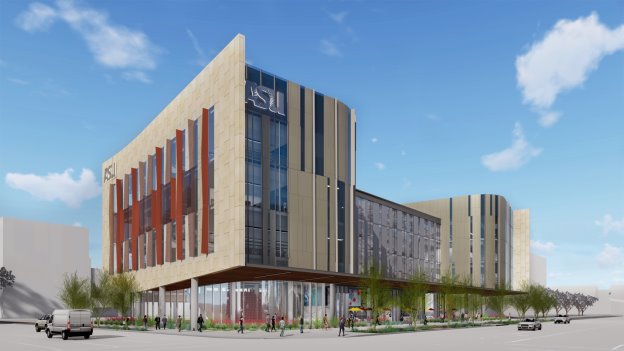By Arizona State University
Arizona State University announced the university’s headquarters for ASU Health, which includes a new medical school, will be built at a location to be determined in downtown Phoenix.
ASU Health, which will address health-related outcomes for the citizens of Arizona, includes not only a School of Medicine built around engineering but also a School of Public Health Technology.
“We are very excited that all three of these things, the headquarters for ASU Health and two new schools will be built in downtown Phoenix,” said ASU President Michael Crow. “The citizens of Phoenix have been an important investor in higher education, science technology and medicine in downtown Phoenix. We are looking forward to working with Mayor (Kate) Gallego, the City Council and City leaders to create something that will enhance the entire healthcare ecosystem and be of service to the entire state. This is the right place to advance that work.”
ASU’s Edson College of Nursing and Health Innovation and its College of Health Solutions are already a part of the university’s downtown Phoenix campus, which began as part of a municipal bond election in 2006 and is now home to more than 12, 000 students and nine colleges and units.
“At a time when the Phoenix bioscience industry is booming, and when the need for highly trained medical professionals is at an all-time high, it’s a big deal that ASU has chosen downtown Phoenix for their newest venture,” Mayor Gallego said.
The new ASU School of Medicine and Advanced Medical Engineering will integrate clinical medicine, biomedical science and engineering. Clinical partnerships, including the existing alliance between ASU and the Mayo Clinic, will support both research and academic programs, delivering solutions that improve patient and health care outcomes.
ASU Health was announced in the spring in response to requests from the Arizona Board of Regents to expand medical education in Arizona by launching a new medical school, one charged with addressing the significant and growing health care needs of the state.

